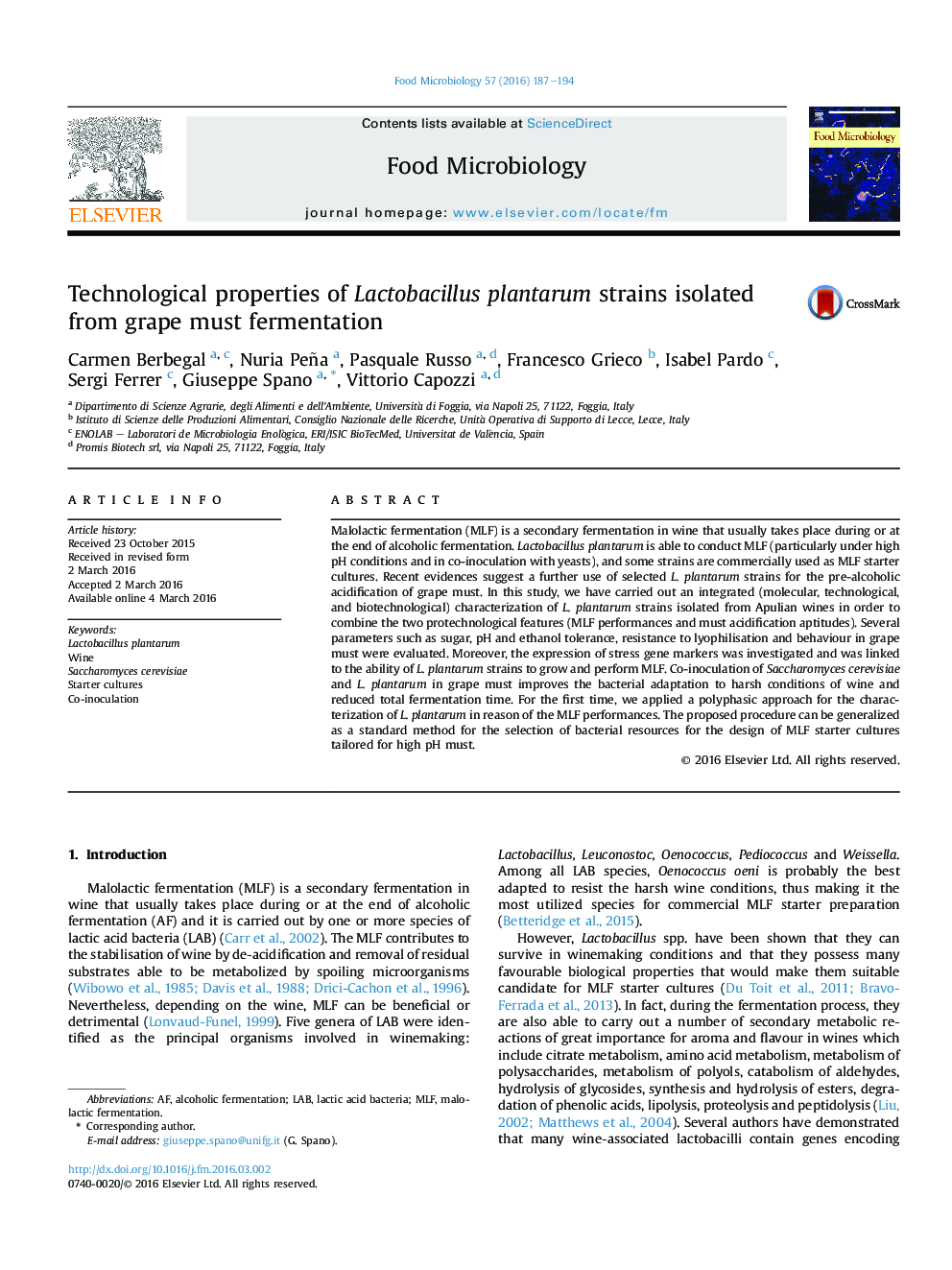| Article ID | Journal | Published Year | Pages | File Type |
|---|---|---|---|---|
| 4362616 | Food Microbiology | 2016 | 8 Pages |
•Technological characterization revealed differences in Lactobacillus plantarum strains behaviour in must.•The stress-related genes expression was correlated to the ability to tolerate wine pH.•We propose a workflow for MLF L. plantarum starter cultures selection for high pH must.•Co-inoculation of S. cerevisiae and L. plantarum in must reduced total fermentation time.•Co-inoculation improve the L. plantarum adaptation to harsh conditions of wine.
Malolactic fermentation (MLF) is a secondary fermentation in wine that usually takes place during or at the end of alcoholic fermentation. Lactobacillus plantarum is able to conduct MLF (particularly under high pH conditions and in co-inoculation with yeasts), and some strains are commercially used as MLF starter cultures. Recent evidences suggest a further use of selected L. plantarum strains for the pre-alcoholic acidification of grape must. In this study, we have carried out an integrated (molecular, technological, and biotechnological) characterization of L. plantarum strains isolated from Apulian wines in order to combine the two protechnological features (MLF performances and must acidification aptitudes). Several parameters such as sugar, pH and ethanol tolerance, resistance to lyophilisation and behaviour in grape must were evaluated. Moreover, the expression of stress gene markers was investigated and was linked to the ability of L. plantarum strains to grow and perform MLF. Co-inoculation of Saccharomyces cerevisiae and L. plantarum in grape must improves the bacterial adaptation to harsh conditions of wine and reduced total fermentation time. For the first time, we applied a polyphasic approach for the characterization of L. plantarum in reason of the MLF performances. The proposed procedure can be generalized as a standard method for the selection of bacterial resources for the design of MLF starter cultures tailored for high pH must.
